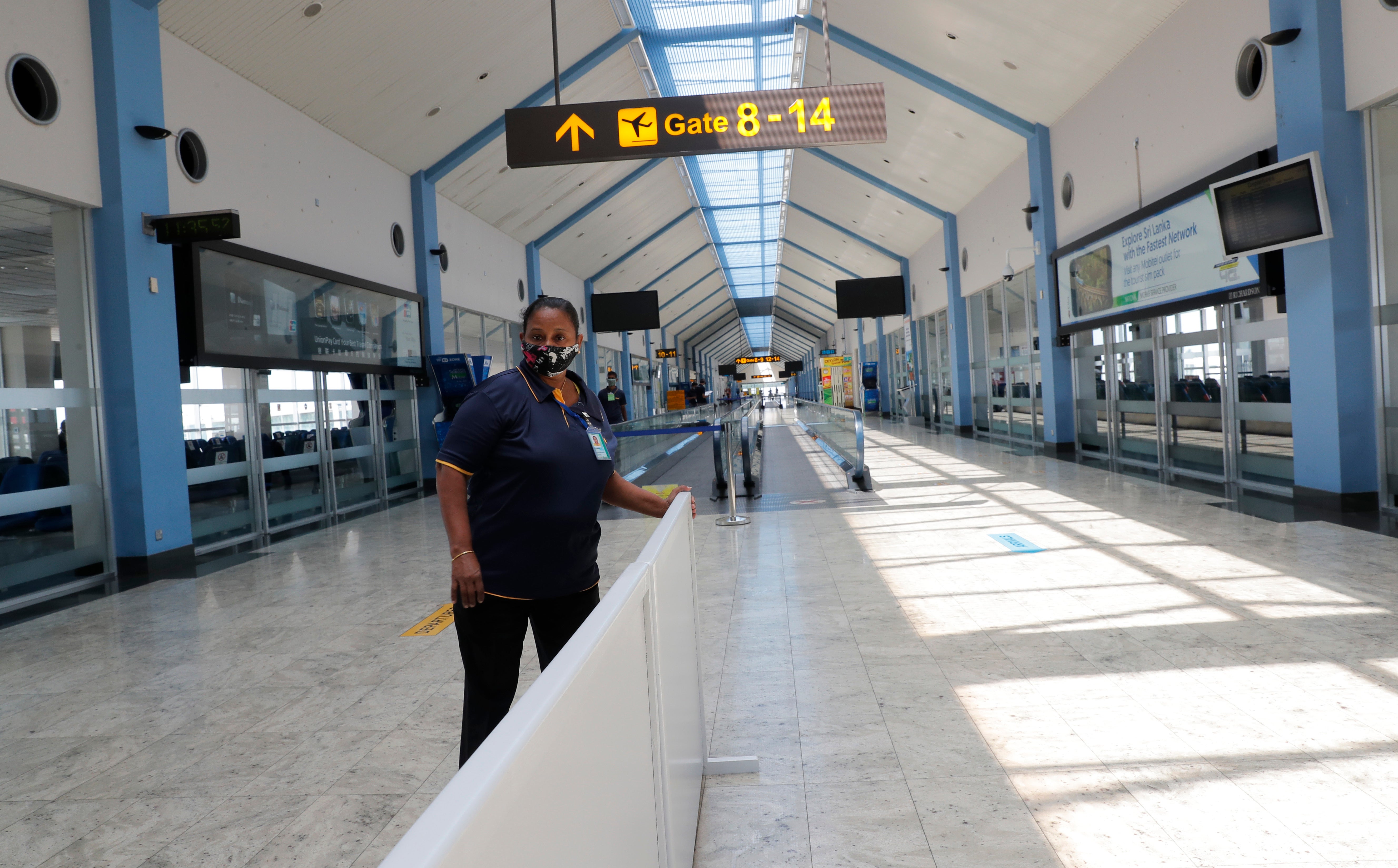Asia Today: Sri Lanka reopens to tourists after 10 months
Sri Lanka has reopened to foreign tourists after a nearly 10-month pandemic closure that cut deeply into the Indian Ocean island nation’s lucrative travel industry

Your support helps us to tell the story
From reproductive rights to climate change to Big Tech, The Independent is on the ground when the story is developing. Whether it's investigating the financials of Elon Musk's pro-Trump PAC or producing our latest documentary, 'The A Word', which shines a light on the American women fighting for reproductive rights, we know how important it is to parse out the facts from the messaging.
At such a critical moment in US history, we need reporters on the ground. Your donation allows us to keep sending journalists to speak to both sides of the story.
The Independent is trusted by Americans across the entire political spectrum. And unlike many other quality news outlets, we choose not to lock Americans out of our reporting and analysis with paywalls. We believe quality journalism should be available to everyone, paid for by those who can afford it.
Your support makes all the difference.Sri Lanka reopened to foreign tourists Thursday after a nearly 10-month pandemic closure that cut deeply into the Indian Ocean island nation's lucrative travel industry
Full operations also resumed Thursday at the island's two international airports, accommodating the commercial flights.
Under new protocols to prevent the spread of COVID-19, tourists must be tested for the virus in their country 72 hours prior to their flight, when they arrive at their hotel in Sri Lanka and again seven days later. They must stay in a “travel bubble” designated in 14 tourism zones without mixing with the local population. About 180 hotels have been earmarked for tourist accommodations.
The resumption of tourism follows a pilot project that began Dec. 26 in which 1,500 tourists from Ukraine visited Sri Lanka in such a travel bubble.
The government closed the country to tourists last March when an outbreak of the virus surfaced. The international airports were closed except for limited flights enabling Sri Lankans to return home.
Tourism is a vital economic sector for Sri Lanka, accounting for about 5% of its gross domestic product and employing 250,000 people directly and up to 3 million indirectly. Hotels other businesses and their employees faced crippling income losses.
Sri Lanka had fewer than 4,000 cases of coronavirus infection until October when clusters centered on a garment factory and fish market spread in the capital, Colombo, and its suburbs. As of Thursday, it has confirmed more than 55,000 cases with 274 fatalities.
In other developments in the Asia-Pacific region:
— People traveling to Australia from most other countries from Friday will need to test negative for the coronavirus before they depart. Australian Health Minister Greg Hunt said Thursday that he’d signed orders which require international travelers to have a negative test within three days of leaving for Australia. All internationals passengers will also need to wear masks on their flights. “The success at home, the agonizing challenges abroad, the fact we have new more virulent strains that are emerging around the world — these remind us of precisely why we have been able to keep Australians safe,” Hunt told reporters in Melbourne. New Zealand and a few Pacific Island countries are exempt from the new rules.
— China is making some of its toughest travel restrictions yet as coronavirus cases surge in several northern provinces ahead of the travel rush for Lunar New Year. Next month’s festival is the most important time of the year for family gatherings and is often the only time many migrant workers are able to return to their rural homes. However, any wishing to do so this year will need a negative virus test within the previous week and may face sometimes-onerous restrictions, including quarantines, in some communities. The National Health Commission on Thursday reported an additional 126 cases of local transmission over the past 24 hours, the largest number, 68, in the northern province of Heilongjiang, part of the vast region formerly known as Manchuria. Commission spokesperson Mi Feng also said the international experts visiting Wuhan have had video conferences with Chinese experts as part of their work. The World Health Organizations are in quarantine at the start of their trip to investigate the origins of the virus. Chinese officials have tightly controlled such research while promoting fringe theories that the virus may have originated overseas.